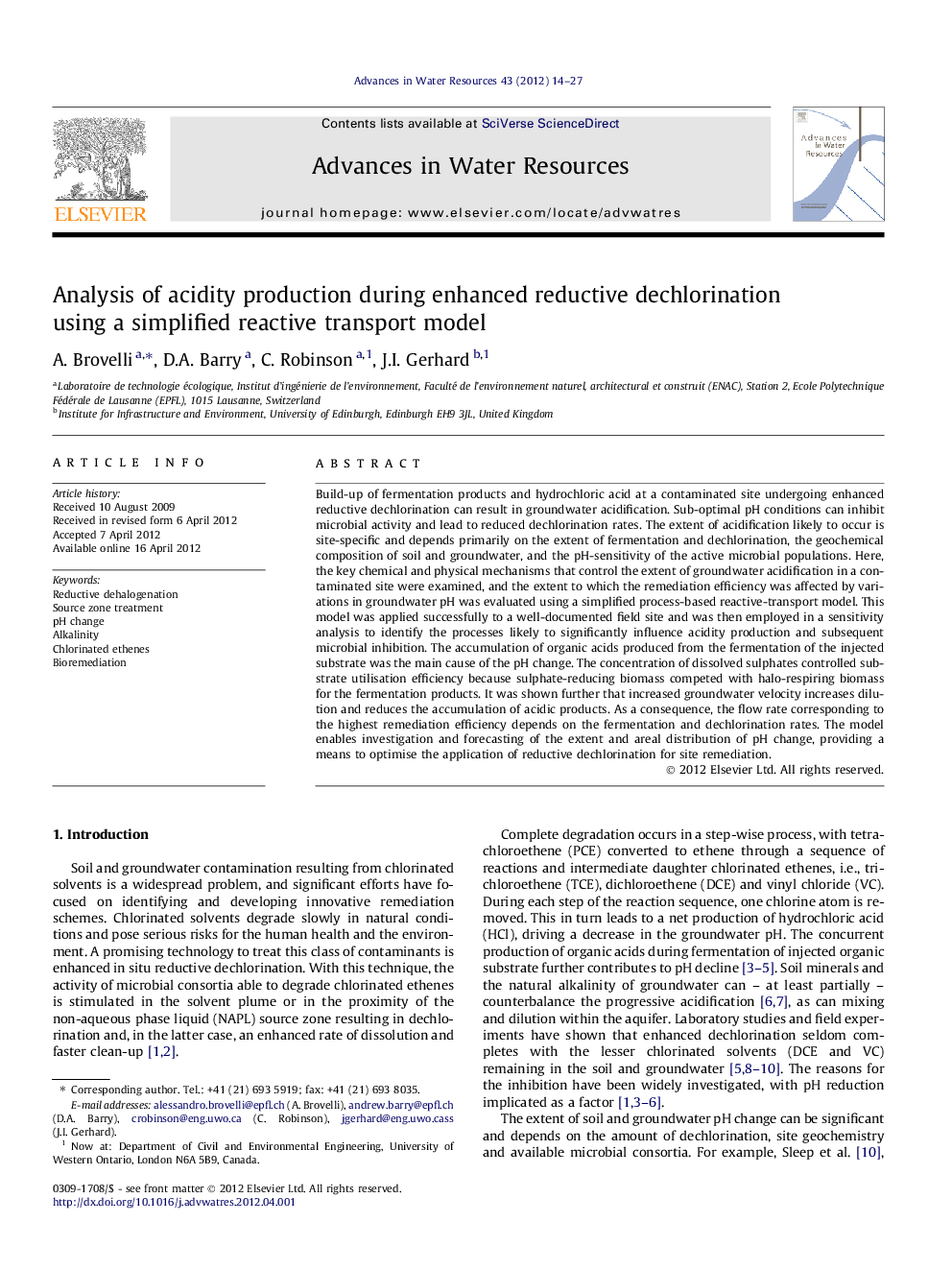| کد مقاله | کد نشریه | سال انتشار | مقاله انگلیسی | نسخه تمام متن |
|---|---|---|---|---|
| 4525918 | 1625665 | 2012 | 14 صفحه PDF | دانلود رایگان |

Build-up of fermentation products and hydrochloric acid at a contaminated site undergoing enhanced reductive dechlorination can result in groundwater acidification. Sub-optimal pH conditions can inhibit microbial activity and lead to reduced dechlorination rates. The extent of acidification likely to occur is site-specific and depends primarily on the extent of fermentation and dechlorination, the geochemical composition of soil and groundwater, and the pH-sensitivity of the active microbial populations. Here, the key chemical and physical mechanisms that control the extent of groundwater acidification in a contaminated site were examined, and the extent to which the remediation efficiency was affected by variations in groundwater pH was evaluated using a simplified process-based reactive-transport model. This model was applied successfully to a well-documented field site and was then employed in a sensitivity analysis to identify the processes likely to significantly influence acidity production and subsequent microbial inhibition. The accumulation of organic acids produced from the fermentation of the injected substrate was the main cause of the pH change. The concentration of dissolved sulphates controlled substrate utilisation efficiency because sulphate-reducing biomass competed with halo-respiring biomass for the fermentation products. It was shown further that increased groundwater velocity increases dilution and reduces the accumulation of acidic products. As a consequence, the flow rate corresponding to the highest remediation efficiency depends on the fermentation and dechlorination rates. The model enables investigation and forecasting of the extent and areal distribution of pH change, providing a means to optimise the application of reductive dechlorination for site remediation.
► A biogeochemical reactive transport model was developed to simulate soil pH changes.
► The interactions between microbial and abiotic geochemical processes were analysed.
► Accumulation of organic acids produced by fermentation was the main source of acidity.
► Groundwater residence time controlled the pH changes and remediation efficiency.
► The simulator can be used as a design tool to estimate the amount of buffer required.
Journal: Advances in Water Resources - Volume 43, July 2012, Pages 14–27